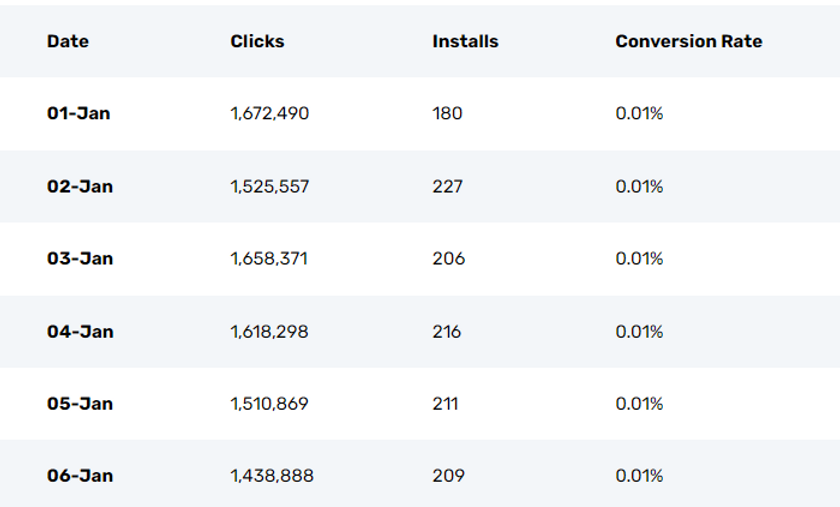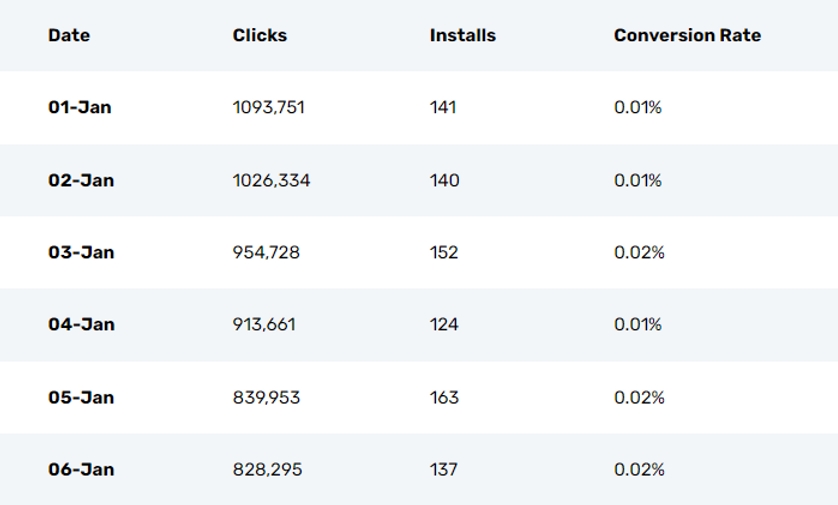Table of Contents
ToggleWhat is the Conversion Rate?
When advertisers run ad campaigns, their ads are displayed thousands of times on the internet. Conversion rate (called CVR sometimes) refers to the number of conversions compared to the clicks received (a more performance-based metric, generally, advertisers use clicks as the base instead of impressions).
CVR can be either a heavily watched metric or a wholly ignored metric depending on what the advertiser is paying for:
- If an advertiser is paying on the CPC model, CVR will be the most critical metric. Advertisers will spend ages trying to increase the CVR and optimizing their strategies and targeting to get better CVRs.
- If an advertiser is paying on Conversion (CPS / CPL / CPI etc., models), then the CVR is generally the most ignored metric. The logic is that if you are not paying for clicks, then why bother with how many clicks came or what the CVR for a source was?
This dichotomy doesn’t make sense since the basic premise of HOW the advertising is being run remains the same. Only the payout model has changed. Irrespective of whether the payout is on click or conversion, the sequence that is required is
- Impression
- Click
- Conversion
This means that the final comparison metric for any publisher to run an ad campaign is CPM only. The publisher will typically continue a campaign if the campaign makes sense with typical CPM metrics. Whether the payout is on conversion or click or impression, for that matter, is immaterial.
Consider the below metrics:
- An advertiser pays $0.50 for every install of their app.
- Consider a CVR rate of 0.1%. This implies that to get 1 install, a publisher has to trigger 1000 clicks. The effective CPC earning for the publisher: $0.0005 / click.
- Let’s go one step back. To get 1000 clicks, how many impressions will it take? Let’s say the CTR is 1%. This means that for 1000 clicks, the publisher needs 100,000 impressions to be served. The effective CPM rate here: is $0.000005 per 1000 impressions
The question to be considered here is, does the above make commercial sense for a publisher? Is the CPM rate this low to justify a publisher’s running this campaign when there are multiple other campaigns available at better CPM rates? The main reason for this crazily low CPM rate or even CPC rate is the extremely low CVR of 0.1%. The only way this business model makes sense for a publisher to run an ad campaign at this CPM rate is AdFraud.
When advertisers ignore the CVR rate and assume that if they are paying for conversion and clicks don’t matter, they turn their back to a critical metric that can identify fraud in their campaigns.
Why low CVR indicates AdFraud
One key element that is generally missed when running a conversion-linked campaign is AdFraud types:
- Click Spamming (app-based)
- Cookie Stuffing (web-based)
The point of both strategies is to steal organic traffic and ensure that the end conversions that were already occurring organically are rehashed as inorganic conversions. The advertiser pays for his traffic.
These frauds work to take advantage of the last-click attribution model. When a conversion happens, the last click is searched for. If the last click comes through an inorganic source, it is attributed as the conversion source and gets paid for it.
As a publisher, I can keep firing clicks repeatedly for different users and device IDs (in the background). If any of those users go organically to trigger a conversion, I will get paid for it.
Obviously, for this to succeed, I will have to fire millions of clicks and then hope that some of these trigger organic conversions, which I will then steal.
But that means that my CVR will be extremely low.
Here is an example of an advertiser who ran a subscription-based campaign in the Middle East.
Android Campaign :

IoS Campaign:

So, in 6 days, this source triggered 15m clicks across Android and IOS. This is amazing. The total population of UAE (target market) is ~10m! So, if this source is to be believed, this source covered the entire country in 6 days and then started over again!!
From any logic, there is no way this traffic makes sense. A genuine publisher can’t waste so many clicks and impressions and earn little. So many users can’t click so many times before installing the app. A 0.01% ratio means that users clicked on the ad 10,000 times before installing the app. Would you ever have the time or energy to click 10,000 times before installing an app?
So, understanding the CVR metrics for your sources and tracking them regularly is essential irrespective of whether your payouts are linked to impressions/clicks or not. They hold essential trends for you to understand fraud in your campaigns.
Also, remember that an excellent performing source (in terms of ROI / ROAS, etc.) doesn’t mean it doesn’t have fraud. The excellent performing source, which has a crazily low CVR, is most likely stealing organic traffic from you.
So, as a thumb rule:
- Terrible performing sources are bad
- Excellent-performing sources are most likely also bad!
And that is the key message from this article that any performance marketer should take back.




